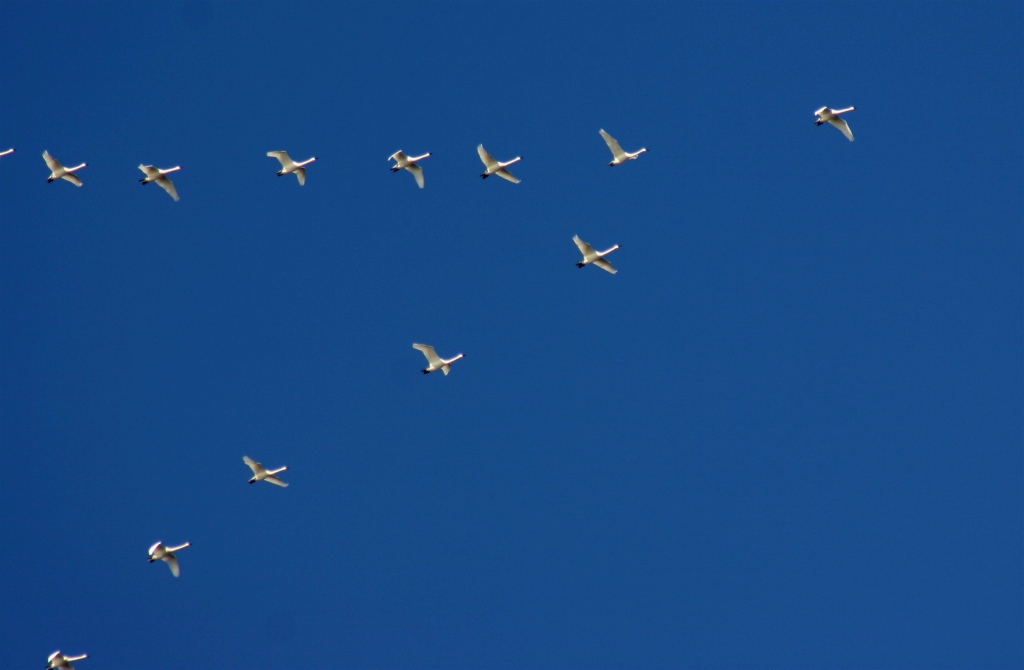
9 November 2007
Any day now tundra swans will move through western Pennsylvania on their way south to the Chesapeake.
A flock usually flies over my house at night in early November. I know they’re overhead when I hear them calling as they fly, a “woo-ing” sound that resembles the voices of children playing in the distance. If I’m lucky, I’m already outdoors and can see them illuminated from below by the city lights. Otherwise I race for the door, burst outside in the dark – and usually miss them.
Tundra swans hold a particular fascination for me because they rarely spend any time near Pittsburgh. Those seen overhead in the fall generally spend the summer breeding in Canada’s Northwest Territory and Alaska’s North Slope. In autumn they fly south and east across Canada, the Great Lakes and Pennsylvania, destined for Chesapeake Bay and North Carolina – a journey that covers 3,600 miles and takes about 12 weeks.
I will never forget the time I watched a flock of tundra swans land at dusk on Yellow Creek Lake in Indiana County. I was sitting in the Waterfowl Observatory blind, unable to see the sky. Snow had started falling when I heard the voices of swans overhead. As they came into view they circled once then, one after the other, they cupped their wings and landed in a gliding V on the lake. What a beautiful thing.
Come, swans!
(photo by Chuck Tague)
I’m a transplanted Pittsburgher–from Sewickley actually–now living in Chesapeake County (Columbia, Maryland, southwest of Baltimore). I saw my first Tundra Swans in the winter at Pymatuning and Presque Isle in the early 60s–they were called Whistling Swans in those days. They were also a special treat, since as your posting notes, they do not often light in Western Pennsylvania. Now I can see scores of this majestic bird in the late fall and winter at Eastern Neck National Wildlife Refuge near Chestertown, Maryland, on the Eastern Shore. A special treat this time of year is hearing their somewhat eerie flight calls overhead at night.
Like many areas, we have a year-round population of Mute Swans. These have escaped into the wild from captivity. There is quite a heated debate about the Maryland Department of Natural Resources’ plan to eliminate some of this species, supposedly because they consume a great amount of bay grasses. I am personally quite opposed to this idea–live and let live, I say.
Enjoyed your postings about Red-tailed Hawk, the most common hawk in the Sewickley area when I was growing up and one of my all-time favorite birds.